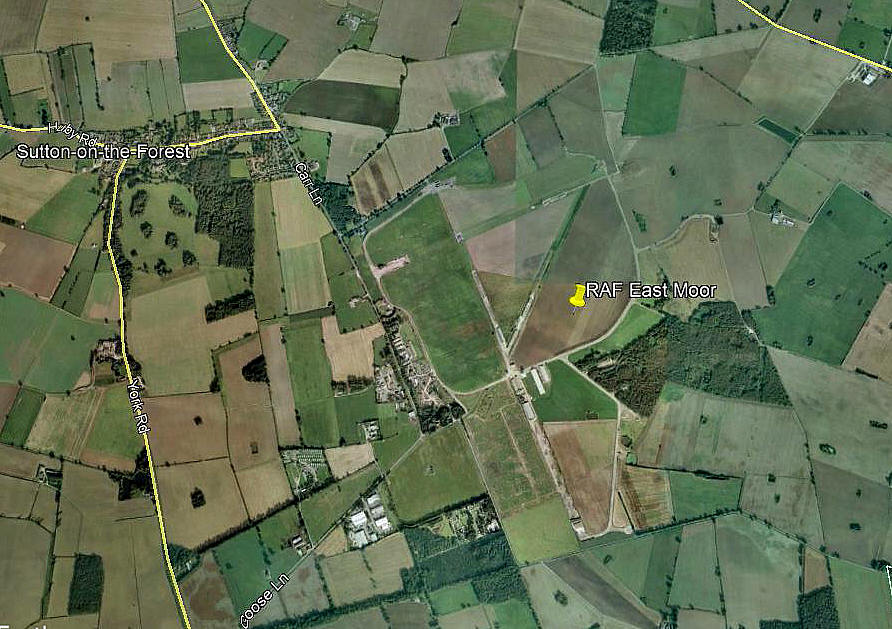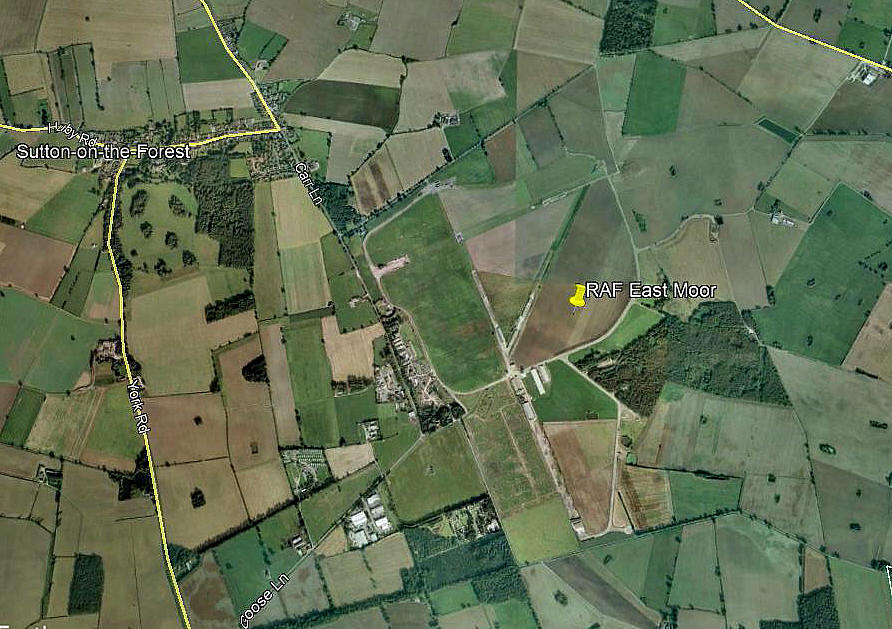East Moor
EAST MOOR: Military aerodrome
Note: Both these pictures were obtained from Google Earth ©
Another good example of how, seventy years later, the general layout and the runways are still clearly visible.
Military users: RAF Bomber Command 6 Group
166 Sqdn (Avro Lancasters)
429 (RCAF) Sqdn (Vickers Wellingtons)
415, 425 & 432 (RCAF) Sqdns (Handley Page Halifaxs)
Location: E of B1363, SE of Sutton on the Forest, 7.5nm N of York
Period of operation: 1942 to 1946
Runways: WW2: 07/25 1287x46 hard 03/21 1310x46 hard
16/34 1737x46 hard
NOTES: During WW2 RAF bomber bases were very busy places with typically somewhere between 1500 and 2000 personnel on station. Apart from those who study the subject how many other people in the UK today remember EAST MOOR? Yet when in operation in late 1944 some 2094 RAF/RCAF personnel were based here plus 482 WAAFs. A figure that puts this aerodrome in the major league of RAF Bomber Command aerodromes. A now really famous aerodrome like SCAMPTON for example had 2326 RAF personnel plus 268 WAAFs at this time.
A BUM DEAL?
Is it just my imagination? Were the pilots and crews from Commonwealth countries more often than not given the worst aircraft to fly in Bomber Command? Whether or not this is correct the crews flying the Mk.II and Mk.V Halifax certainly drew the short straw facing a much greater chance of being shot down than those flying the Mk.III or Lancasters.
This said, the average life expectancy of Bomber Command crews selected to attack targets in Germany in 1943/4 was just six weeks after joining an operational Squadron!
LIVING CONDITIONS
The living conditions provided for most Bomber Command crews were minimal at most aerodromes, a disgrace really, but the ‘High Command’ viewed these crews as ‘Cannon fodder’ so why provide any luxury? Their mentality had hardly changed from the trenches warfare attitude in WW1. Time and time again huge raids were dispatched to Germany in conditions known to inflict maximum casualties. The more experienced crews knew this of course, but still they went.
Some raids, especially those to Berlin could now be viewed today as being nigh on suicidal, the route and tactics chosen virtually guaranteed to inflict huge losses in the prevailing conditions. The Luftwaffe night fighter forces had perfected techniques to light up the RAF bomber streams with parachute flares which can be likened to flying down a daylight High Street. Plus of course the .303 machine guns fitted to RAF bombers were no match for the cannons fitted to Luftwaffe night fighters. It appears that 'Butcher' Harris, C in C of Bomber Command, had campaigned to have 0.5 cannon fitted as defensive armament to his bombers. But for some reason they never became available. Those manufactured in the USA were reserved for use by the American 8th Air Force once they became involved.
We'd love to hear from you, so please scroll down to leave a comment!
Leave a comment ...
Copyright (c) UK Airfield Guide

















